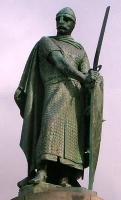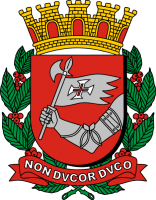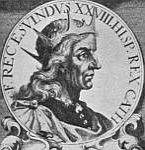0
















| Thumbs Up |
| Received: 40,071 Given: 10,740 |














| Thumbs Up |
| Received: 4 Given: 0 |

That was the only thing that has ever pissed me off about Family Guy. Yes, I understand the stereotypical Portuguese fishermen thing, but could you not give them Brazilian accents and Brazilian tans? I if you are going to make fun of other people's nationalities (as I myself often do) then do it correctly.








| Thumbs Up |
| Received: 1 Given: 0 |

D. Maria II (Rio de Janeiro, 4 April 1819 – Lisbon, 15 November 1853)
Brazilian born Queen of Portugal -
http://en.wikipedia.org/wiki/Maria_II_of_Portugal
Matias de Albuquerque (Olinda, Brazil, 1580s – Lisbon, 9 June, 1647), the first and only Count of Alegrete.
He was nicknamed "Hero of Two Continents" for his performance, beginning in 1624, against the Dutch invaders of colonial Brazil (Pernambuco) and for his role, beginning in 1641, as a general in Portugal, fighting for João IV during the Portuguese Restoration War.

Sebastião José de Carvalho e Melo, 1st Count of Oeiras, 1st Marquess of Pombal. Brazilian Amerindian mtDNA
Antonio Vieira (February 6, 1608, Lisbon, Portugal - July 18, 1697, Bahia, Brasil) was a Portuguese Jesuit and writer, the "prince" of Catholic pulpit-orators of his time.

















| Thumbs Up |
| Received: 4,263 Given: 5,005 |

Yes, that's actually something that only happened in the mainland since 1974, not before. You bet people of african descent were seen as alien during the Salazar Era in Portugal itself, pretty much everyone turned their heads when seeing one of these people. It was a much, much more conservative society than it is today..and better, too. They weren't considered "inferior", just not the same as us.
During the colonial war some people referred to africans as "turras", from terrorist, in generalization.
The miscegenation issue here is not something that was created during the 500 years of colonialism, but from the 40 years of democracy. It seems even as if we are responsible for the Africans' suffering (and to a part we are, but rather them than us, right?), and now that we should harbour and help them having a better life at our own expense.
We even see some of those "Idols" (and alike) shows in Portugal that pick up africans to represent the new generation of "Portuguese" dance/sing stars and what-not.
Despicable, I'll never consider them my countrymen, but unfortunetly it seems as if we're slowly becoming a fewer and fewer everyday. We're becoming France.
Also, take note, things in Lisbon and neighbouring areas are way more critical than on the rest of the country. The North is much more "cleaner".











| Thumbs Up |
| Received: 1 Given: 0 |

Its interesting you chose these two Portuguese historical figures, both of which were also important in the history of Brazil. I say this because the Marquês de Pombal was accused of having black ancestry and Padre António Vieira was known to have black African ancestry.











| Thumbs Up |
| Received: 1 Given: 0 |

Well, it can´t be denied that the Salazar regime did widely disseminate the idea that the Portuguese overseas provinces were free of racial discrimination and this was indeed true to some extent in comparison with the neighbouring colonies of other European powers or white settler states. This said, the reality on the ground was very much different from state propaganda.








| Thumbs Up |
| Received: 1 Given: 0 |

A rich and powerful "Herrenvolk" will always command subaltern people. As in Imperial Rome or in Imperial Rio de Janeiro, Lisbon was the head of a powerful Empire with plenty of Slaves. Some Bairros of Lisbon were just like Brixton-London, nowadays:
Lisboa - Chafariz d'El Rey (1570-1580)
A única pintura portuguesa que, de acordo com o nosso conhecimento, nos mostra objetivamente trajes populares em uso na Lisboa em meados do século XVI, constituindo-se por isso numa relevantíssima fonte documental iconográfica, é a tela denominada Chafariz d’El Rey (fig.5). De autoria anônima e atribuída a artista de origem flamenga, a obra pertence hoje à coleção de José Manuel Rodrigues Berardo (1944- ), bilionário madeirense mais conhecido como Joe Berardo.
Obra de intenso realismo ingênuo, o quadro fornece-nos uma infinidade de preciosas informações sobre diferentes aspectos da Lisboa quinhentista, na região do Cais de Santarém. O que mais chama a atenção dos pesquisadores portugueses é, sem dúvida, a aparência da notável fonte medieval depois das obras feitas ao tempo de D. Manuel I, fonte ainda hoje existente embora sob forma totalmente diversa.
Para nós é particularmente comovente observar o populacho lisboeta, com o qual se misturavam então muitos escravos negros trazidos da África. Uma multidão desordenada, maciçamente constituída de homens e escravas, invadia o recinto do chafariz, provocando decerto grande vozerio e alvoroço.
No quadro, é rara a presença de mulheres de condição livre. Nas janelas altas das casas, à distância segura da arraia miúda que inundava o espaço público, surpreendemos algumas damas com trajes de influência talvez francesa, dedução feita a partir do tipo de decote e toucado que usavam. Impressão que sai reforçada, quando observamos a senhora com traje parecido que é objeto da atenção de um rapaz, ambos ocupando um bote que flutua ao sabor das ondas do estuário, em primeiro plano.
Se a moda do elemento feminino pertencente às camadas superiores traía naquela altura a influência francesa, a indumentária masculina dessas mesmas camadas parecia estar já sob o influxo direto dos trajes espanhóis. Os homens de capa e espada que desfilavam ao longo do cais vestiam-se todos de negro, cor que se tornara quase universal durante aquele período na Europa ocidental.
As escravas, contudo, trajavam-se como as mulheres brancas mais humildes do povo (fig.6). Portando roupas parecidas, peixeiras portuguesas estariam, no inicio do século XVIII, atendendo em barracas no Mercado da Ribeira Velha em Lisboa, conforme painel de azulejos hoje exposto no Museu da Cidade (www.museudacidade.pt), numa época em que, aparentemente, as escravas negras já não eram assim tão numerosas em Portugal (fig.7 A). Na pintura ora analisada, as cativas trazem vestidos pardos, inteiriços, com a saia arregaçada na frente para facilitar os movimentos, deixando à mostra uma saia ou vestido interior cuja fímbria não atingia os tornozelos. Calçavam grosseiros sapatos camponeses que subiam até os tornozelos e envolviam a cabeça em panos brancos, as chamadas toalhas de toucar citadas nos inventários paulistas, hábito herdado da mulher medieval, ciosamente conservado pelas portuguesas e espanholas das camadas inferiores. Uma figura de mulher desse mesmo tipo aparece no fundo de um quadro do pintor espanhol Diego Velásquez (1599-1660), datado do inicio do século XVII (Cristo em casa de Marta e Maria, 1618), confirmando a universalidade, no mundo ibérico, desse modo de vestir próprio da mulher de baixa condição social. A única diferença que se nota era que o vestido do século XVII havia sofrido uma modificação de ordem estética, tendo suas formas, antes ajustadas, passado por um processo de amplificação (fig.7 B).
Quanto aos escravos, vestiam-se do mesmo modo que os rudes homens da plebe, os chamados peões, ralé infeliz sempre ameaçada e humilhada pelas Ordenações Reais portuguesas. Traziam o gibão (ou jubão) diretamente sobre a camisa (gibão segundo parece guarnecido com mangas avulsas de outra cor), antiquadas calças feitas de tecido, muito ajustadas às pernas, presas por atilhos na borda inferior dos gibões, e em geral sem pés, presas por meio de cabrestilhos (alças, fixadas nas bocas das pernas das calças, que se enfiavam nos pés, deixando–os descobertos), braguilhas salientes, e borzeguins ou, no caso, botas moles até os joelhos, além de carapuça e chapéu na cabeça (fig.8). Outros punham sobre o gibão uma veste exterior que ia até um palmo do joelho (que era, sem dúvida, a versão popular do pelote) (fig.9). Um dos escravos vistos na pintura usava roupa mais sumária, semelhante a dos cativos brasileiros. Ceroulas largas, pernas e pés desnudos e dorso coberto por camisa, cujas mangas estavam enroladas até os cotovelos. O rosto, ao que parece, vinha escondido por uma máscara de lata, provavelmente para que perdesse o mau hábito de ingerir terra (fig.10).
As cores dos trajes humildes eram sempre pardacentas ou acinzentadas, cores da lã e do linho sem tintura ou tingidos com corantes sem qualidade. Só os trajes dos ricos eram coloridos, às vezes exageradamente, por meio de pigmentos caros. Por influência da moda espanhola, a cor negra começava a predominar nos trajes das camadas superiores, algo que ia se prolongar até além da Restauração (1640), quando a Corte portuguesa independente da Espanha passaria a adotar a moda masculina francesa.
http://www.arquiamigos.org.br/info/i...i-estudos2.htm


















| Thumbs Up |
| Received: 1,613 Given: 356 |

Kocham Cie Portugalia!













| Thumbs Up |
| Received: 18 Given: 0 |
















| Thumbs Up |
| Received: 4,263 Given: 5,005 |
There are currently 1 users browsing this thread. (0 members and 1 guests)
 Portugal
Portugal
Bookmarks